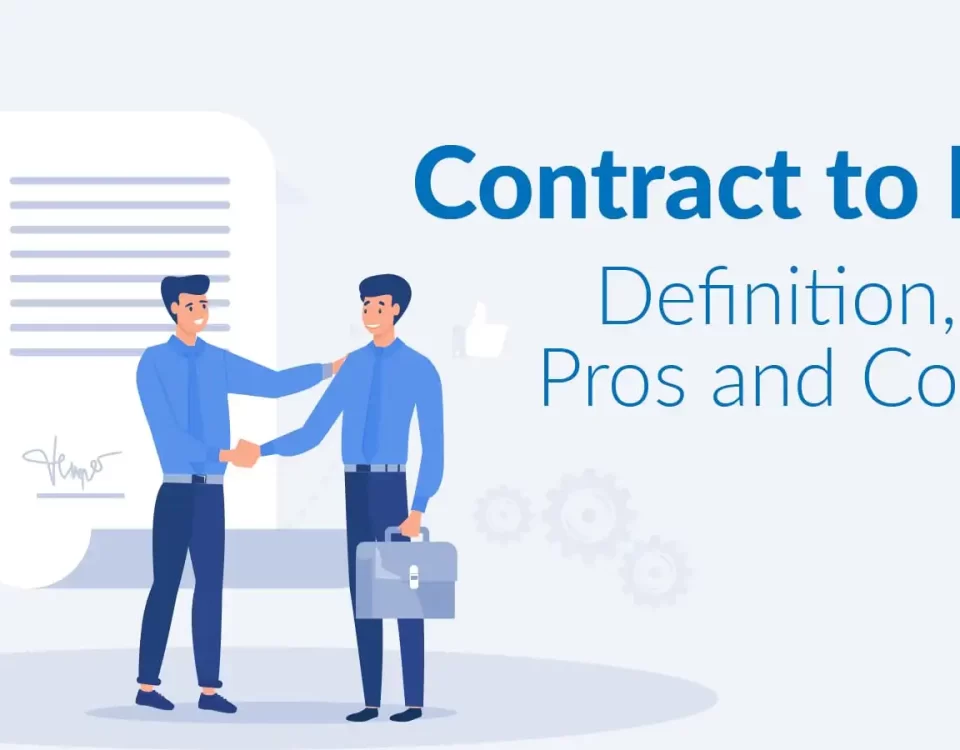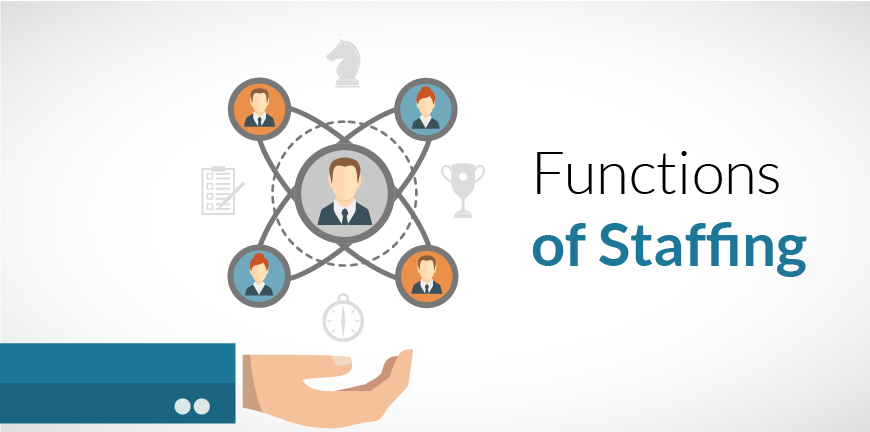
Cloud-Based Payroll Vs. On-Premises Payroll
05/08/2025
The Future of Talent Acquisition: How AI and Machine Learning Are Transforming Hiring Strategies
10/08/2025“Do what you do best and outsource the rest.” — Peter Drucker, the man who is regarded as the father of consulting.
Most businesses look for a sweet deal when it comes to using outsourcing models for managing urgent projects and scaling the existing workforce, isn’t it?
Out of all scalable recruitment models, staff augmentation & time and material contracts seem to be the best choices that can reduce labour cost and maximise resource utilisation. However, both have their USPs and making the right choice among them is dictated by project goals, timelines, budget, complexity, and other constraints.
Let’s fix up a tug of war between staff augmentation vs time and material and see how they fare against each other through a detailed analysis.
What Is Staff Augmentation?
Before commencing the battle of staff augmentation vs time and material, let’s understand each contender separately, making the tussle more interesting.
The staff augmentation model is a flexible & scalable workforce outsourcing strategy where a company can hire external experts to execute specific projects or fill resource gaps on an interim basis. An augmentation model for staffing is a powerful scaling solution to effectively fix skills gaps and reduce project duration without long-term commitment. Staff augmentation services work exceptionally well for filling gaps through instantly tapping the talent pool in IT projects.
Do you realise that staff augmentation will have a market reach of approximately 857.2 billion by 2031? The reason behind this success is its ability to scale workforce in no time and execute projects with evolving requirements seamlessly.
The different types of models offered by the top staff augmentation agencies, like ALP Consulting, include:
- Onshore Staff Augmentation: Local expert professionals integrated onsite for close collaboration and cultural alignment.
- Nearshore Staff Augmentation: Talent sourced from neighbouring countries for better time zone coordination.
- Offshore Staff Augmentation: Remote staffing from distant countries for cost-effective skill access.
- Project-Based Augmentation: Temporary experts are hired for specific project phases or deliverables.
- Skill-Based Augmentation: Specialised professionals onboarded to fill critical skill gaps immediately.
The key benefits of companies choosing the staff augmentation model based on project scope include:
- Access to niche skills without long-term hiring commitments or overhead costs.
- Rapid scalability to meet fluctuating project or seasonal demands effectively.
- Enhanced project control with direct oversight of augmented team members.
- Reduced recruitment time and administrative burden for urgent technical roles.
- Seamless integration with in-house teams for faster collaboration and delivery.
Here is an interesting use case where staff augmentation services have created a huge advantage in the healthcare sector.
A globally recognised hospital was having a severe shortage of medical billing and IT specialists. To fill these talent gaps in real time, the hospital collaborated with a top staff augmentation agency from India that offered an affordable pricing model. This move helps them gain immediate access to medical billing and IT experts with expertise in managing the healthcare industry.
Through this workforce boost, they were able to manage growing workloads, enhance telemedicine services, & improve patient care, resulting in faster and higher-quality delivery that ensured patients received the best possible care.
What Is the Time and Material Model?
A time and materials contract are a workforce outsourcing model where a client pays for the actual time and materials spent on completing a project. The pricing model includes the working hours utilised by each external expert and the overall material cost involved for the entire project duration.
Unlike a fixed price contract, where the overall costs are predetermined, a time and materials contract follow a pay-as-you-go model that offers flexibility during project execution, resulting in maximum resource utilisation and cost savings.
This outsourcing model is especially useful for executing projects with evolving requirements. The responsible T and M agency will track working hours and material costs and provide a detailed invoice to clients.
The components of a Time and Materials Contract include:
- Hourly Labour Rates: Predefined cost per hour for skilled labour.
- Material Costs: Reimbursement for actual materials used during the project.
- Project Scope: General description of work to be performed.
- Billing Schedule: Agreed timeline for submitting and receiving payments.
- Time Tracking: Detailed logs of hours worked by personnel.
- Change Management: Process for handling scope and cost modifications.
- Cap or Budget Limit: Optional ceiling to control project expenses.
- Payment Terms: Conditions for invoice approval and fund release.
- Reporting Requirements: Regular updates on progress and cost breakdown.
- Termination Clause: Conditions under which the contract can be ended.
Here are the key benefits of time and material contracts:
- Allows project adjustments without renegotiating the entire contract or delaying progress.
- Enables immediate work initiation without waiting for final scope or estimates.
- Clear visibility into hours worked and materials used ensures accurate billing.
- Clients can closely monitor progress and provide feedback throughout the development cycle.
- Ideal for evolving requirements, especially in agile or innovation-driven projects.
Here is a use case of the T&M model:
A growing Indian IT startup uses a Time and Materials contract to develop a custom app for a client whose project scope is evolving. The flexible model lets the client pay only for actual hours logged by software developers & project managers and necessary materials, promoting transparency, rapid iterations, and adaptability as project needs change during development.
What are the Key Differences Between Staff Augmentation vs Time and Material?
Now that we have a clear idea of both contenders, let’s compare them and mark out the differences so that we can make an informed decision when it comes to choosing the winner of the tussle. Here we go:
| Aspect | Staff Augmentation Model | Time And Material Contract |
| Engagement Type | Hires specific personnel for the client’s team | Bills for time and effort spent on project work |
| Control | Full control of resources by the client | The vendor manages project progress and delivery |
| Scope Flexibility | Fixed or role-specific tasks | Highly flexible to evolving project requirements |
| Billing Basis | Billed per hour or resource | Billed for actual hours worked and materials used |
| Project Ownership | The client owns the task execution | The vendor may own the project execution and milestones |
| Duration Suitability | Ideal for long-term or ongoing roles | Best for short-term or undefined project scopes |
| Resource Integration | Resources work as part of the client’s internal team | The vendor’s team may work independently |
| Risk Distribution | The client assumes more project risk | Risk is shared between the vendor and the client |
| Cost Predictability | More predictable and stable costs | Costs can vary with time, project scope, and complexity |
| Management Overhead | Requires daily client supervision | Less supervision is needed due to vendor-managed delivery |
When to Choose Staff Augmentation?
Now that we have watched the complete battle staff augmentation vs time and material, let’s choose scenarios where each outsourcing model fits the best. Here are the scenarios where a staff augmentation model works at its best:
- Short-term projects that necessitate niche skills without hiring full-time employees for limited-time tasks.
- Scaling teams quickly for sudden growth phases or urgent deliverables without long-term hiring commitments.
- Filling skill gaps in existing teams with specialised experts for development, testing, or implementation.
- Supporting product launches where temporary resources are needed for testing, marketing, or customer onboarding activities.
- Handling peak workload during seasonal business spikes or critical project milestones needing extra support.
- Reducing hiring risk by evaluating external resources before converting them into permanent roles.
- Accelerating digital transformation projects with experienced consultants without delaying delivery for recruitment.
- Expanding into new business markets where a quick local team setup is needed without long-term infrastructure investment.
- Meeting compliance deadlines with temporary experts well-versed in local laws & industry regulations.
- Minimising project delays when in-house staff are unavailable or occupied with other business priorities.
When to Choose a Time and Material Contract?
Here are 10 scenarios where the Time and Material Contract seems to be the best outsourcing model:
- Evolving project scope where requirements tend to fluctuate during the development process.
- R&D or novice projects where goals are exploratory & outcomes are treated as beta versions before they are released to production.
- Early-stage startups need flexibility in budgeting and product development timelines.
- Agile software development that necessitates adaptable budgeting, where iterative progress & constant changes are inevitable.
- Complex integration projects where third-party dependencies impact timelines & deliverables.
- Ongoing maintenance & support services with fluctuating workloads and priorities.
- UI/UX design projects where client feedback frequently modifies scope & user flow.
- Consulting and auditing services that require time-tracked analysis and phased reporting.
- Custom software builds where feature needs and technical specifications emerge over time.
- Proof of concept or MVPs that evolve based on market validation & user testing.
Key Takeaways
- Staff augmentation quickly fills skill gaps without long-term commitments.
- Time and material suits evolving, undefined project scopes perfectly.
- Choose an outsourcing model based on scope, control, cost, and duration.
- Startups benefit from staff augmentation’s flexibility and scalability features.
- T&M enables agile, transparent billing with flexible work adjustments.
Frequently Asked Questions
1. What Is Staff Augmentation?
Staff augmentation is a flexible outsourcing model that adds skilled professionals to your team for specific projects or timeframes.
2. What Is the Time and Material Model?
Time and Material Contract is a billing model where clients pay for actual hours worked and materials used during project execution.
3. What is the main difference between staff augmentation and time and material?
The main difference between staff augmentation vs time and material is that staff augmentation extends your team with talent, whereas the T&M model focuses on hours spent and resources used for deliverables.
4. Which model is more cost-effective?
Time and materials T&M is cost-effective for short-term and changing projects, whereas staff augmentation is better for long-term resource extension needs.
5. What are the benefits of staff augmentation?
The key benefits of staff augmentation services include quick access to skilled professionals, reduced hiring time, better control, offers flexibility, and lowers long-term employment risks.
6. Staff augmentation vs time and material: Which is more flexible for startups?
Staff augmentation offers more flexibility for startups needing to scale teams without committing to full-time hires.
7. What are the pros and cons of staff augmentation?
The pros of the staff augmentation model include flexibility, quick onboarding, and scalability, and the cons include integration issues, possible communication gaps, and less control over cultural alignment.
Contact Us For Business Enquiry

Kasthuri R
Kasthuri R is the Co-Founder & Executive Director at ALP Consulting, bringing over 23 years of experience in search, staffing, and HR consulting. She has been instrumental in driving ALP’s recruitment, employee leasing, and executive search practices across diverse industry verticals. With deep expertise in talent acquisition, HR strategy, and operational management, Kasthuri has built scalable, client-focused solutions that enhance workforce efficiency. Her strategic leadership continues to steer ALP Consulting toward innovation and excellence in people management.




